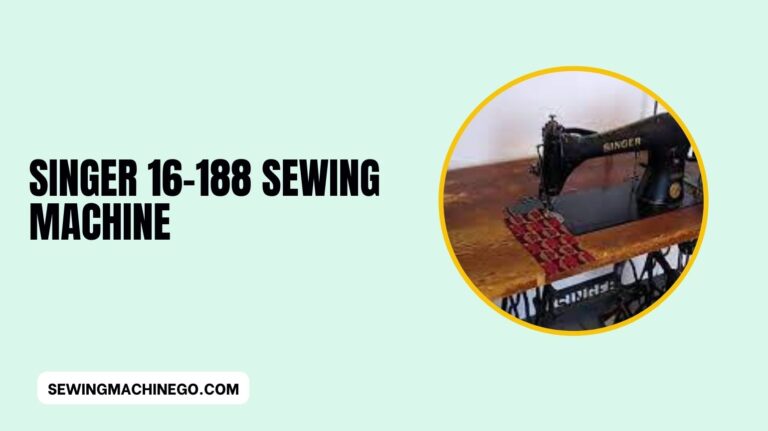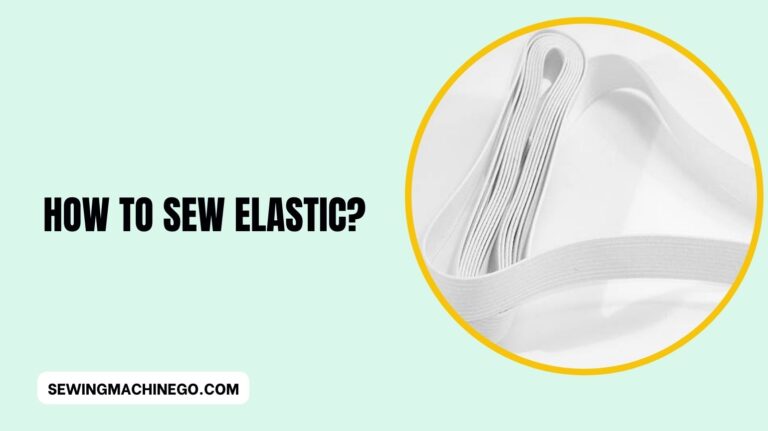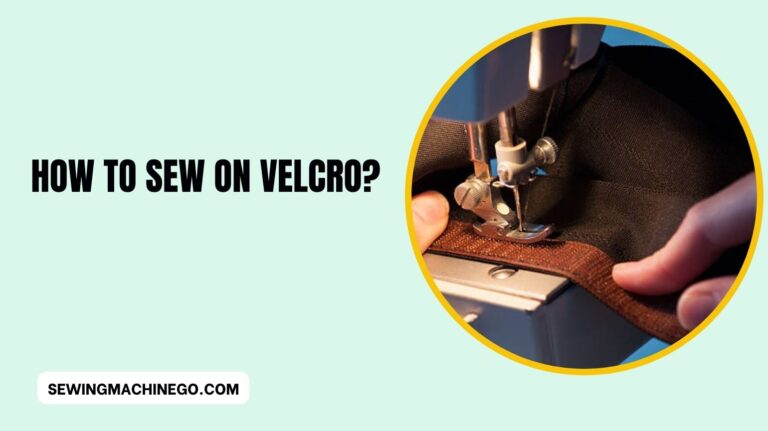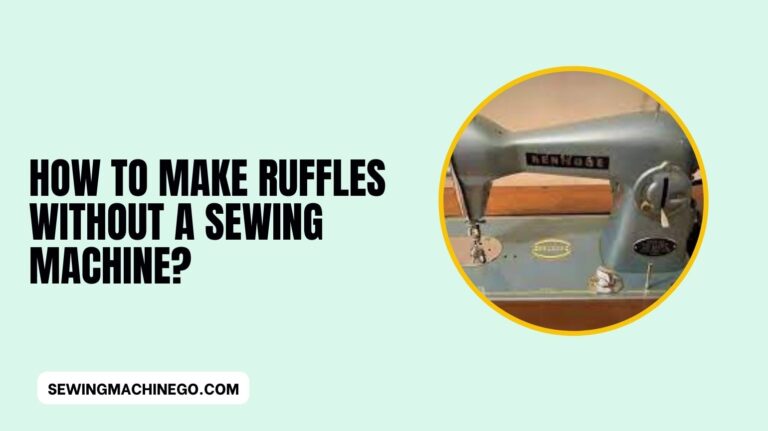How to Change Sewing Machine Needle? (Easy Guide) Of 2023
Sewing can be a truly satisfying and rewarding hobby, allowing you to create beautiful garments, crafts, and home decor items.
How to Change Sewing Machine Needle? Whether you’re a seasoned pro or just starting, one of the most critical aspects of sewing is maintaining your sewing machine.
Regular maintenance ensures your machine runs smoothly and produces impeccable stitches.
In this guide, we will focus on a fundamental aspect of sewing machine maintenance – changing the sewing machine needle.
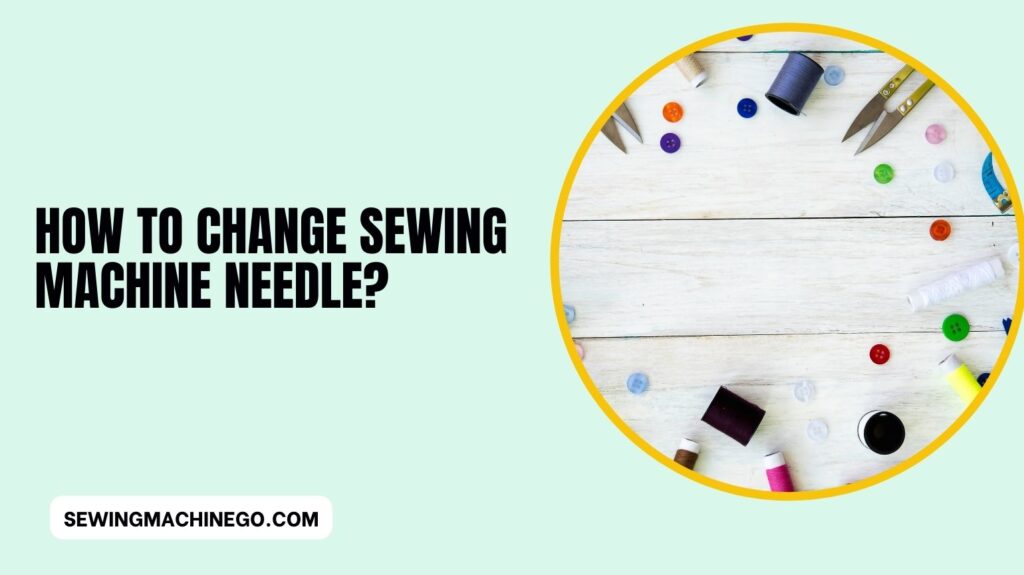
The Importance of a Sharp Needle
Before we dive into the process of changing a sewing machine needle, let’s understand why it’s crucial to do so.
A sharp needle is essential for a smooth and precise sewing experience. A dull or bent needle can lead to various problems, including uneven stitching, fabric snags, or even damage to your sewing machine.
To keep your sewing projects looking their best, it’s important to change the needle regularly.
Identifying When to Change the Needle
Knowing when to change your sewing machine needle is key. Here are some common signs that indicate it’s time for a replacement:
- Frequent thread breakage.
- Skipping stitches.
- Puckering or looping of fabric.
- Unusual noise while sewing.
- Visible damage or bending on the needle.
Tools and Supplies Needed
Before you start, gather the necessary tools and supplies:
- New sewing machine needle (ensure it’s the correct type and size).
- Screwdriver.
- Fabric or paper to test the new needle.
- User manual for your sewing machine.
Step-by-Step Guide to Changing a Sewing Machine Needle
a. Power off Your Machine
Safety first! Ensure your sewing machine is turned off and unplugged to prevent any accidents while changing the needle.
b. Remove the Old Needle
Use a screwdriver to loosen and remove the old needle from the needle holder. Be careful not to drop the old needle, as it can be sharp.
c. Choose the Right Replacement Needle
Consult your sewing machine’s manual to determine the correct type and size of needle needed for your project. Different fabrics may require different needles.
d. Inserting the New Needle
With the flat side of the needle facing the back of the machine, carefully insert the new needle into the needle holder. Tighten it with the screwdriver, but be cautious not to overtighten.
e. Checking Needle Alignment
Check that the needle is correctly positioned. It should be inserted as far up as possible while still holding it securely in the holder. This ensures that your stitches are consistent.
Testing the New Needle
Before you start sewing your project, test the new needle on a piece of fabric or paper. This helps ensure that it is properly aligned and won’t cause any issues during your sewing.
Tips for Needle Maintenance
To extend the life of your sewing machine needle:
- Change the needle for every new project or after sewing for an extended period.
- Keep a variety of needle types and sizes on hand.
- Avoid pulling the fabric while sewing, as it can bend the needle.
Troubleshooting Common Issues
Changing the needle on a sewing machine is a basic maintenance task, but it’s important to do it correctly to avoid sewing problems and potential damage to your machine.
Here are common issues people might encounter when changing a sewing machine needle and how to troubleshoot them:
- Needle won’t come out:
- Solution: Make sure you’re using the correct size of needle for your machine. Loosen the needle clamp screw (usually located at the top of the needle) counterclockwise. If it’s stuck, use a screwdriver or needle clamp tool if provided with your machine. Be gentle, as excessive force can damage the machine.
- Needle is stuck in the fabric:
- Solution: If the needle breaks while sewing and part of it remains in the fabric, carefully remove the fabric from the machine and cut the thread. Use needle-nose pliers to grip the remaining needle piece and gently pull it out. Ensure there are no needle fragments left in the machine.
- Needle is not inserted correctly:
- Solution: Make sure you’re inserting the needle with the flat side facing the back of the machine (check your machine’s manual for guidance). Push the needle all the way up into the needle clamp before tightening the screw.
- Needle keeps falling out:
- Solution: Ensure you’ve tightened the needle clamp screw properly. If it continues to loosen, you may need to replace the screw or consult your machine’s manufacturer for guidance.
- Needle is bent or damaged after installation:
- Solution: Be careful when inserting the needle, ensuring it goes in straight and that the needle is properly aligned. Also, check the needle for any burrs or defects before inserting it.
- Sewing machine still skips stitches or has tension issues after changing the needle:
- Solution: The needle is just one factor affecting stitch quality. Ensure that you’re using the correct type and size of needle for your fabric, and that the needle is fully inserted and properly tightened. Check the machine’s threading, bobbin, and tension settings. If problems persist, it may be due to other issues that require professional servicing.
- You’re unsure which needle to use:
- Solution: Consult your sewing machine’s manual for needle recommendations based on the type of fabric you’re using. Generally, ballpoint or universal needles are suitable for woven fabrics, while stretch or jersey needles are ideal for knits.
- You’re not replacing the needle often enough:
- Solution: Needles should be changed regularly, as they can become dull or bent after prolonged use. A general guideline is to change the needle every 8-10 hours of sewing, but it may vary depending on the fabric and the complexity of your projects.
People also ask
How do you change a needle on a Singer sewing machine?
To change the needle on a Singer sewing machine:
Power off your machine and unplug it for safety.
Use a screwdriver to loosen and remove the old needle.
Consult your sewing machine’s manual to determine the correct needle type and size for your project.
Insert the new needle with the flat side facing the back of the machine.
Tighten it with the screwdriver, being careful not to overtighten.
Test the new needle on scrap fabric to ensure it’s properly aligned.
Plug in and power on your machine, and you’re ready to sew with a fresh needle.
How do you change a needle on an old sewing machine?
To change the needle on an old sewing machine:
Turn off and unplug the machine for safety.
Locate the needle clamp or screw that holds the needle in place.
Use a screwdriver or your fingers to loosen and remove the old needle.
Select the correct replacement needle size and type for your project.
Insert the new needle into the needle holder.
Tighten it securely using the clamp or screw.
Plug in the machine, and you’re ready to sew with a new needle on your vintage sewing machine.
Which way does the flat side of a sewing machine needle go?
The flat side of a sewing machine needle should be positioned facing the back of the sewing machine.
This orientation ensures that the needle is correctly aligned in the needle holder and that your stitches will be consistent and accurate during sewing.
Can you take the needle out of a sewing machine?
Yes, you can take the needle out of a sewing machine. To do so, follow these general steps:
Power Off: Make sure the sewing machine is turned off and unplugged for safety.
Loosen the Needle Clamp: Depending on your sewing machine’s design, you may need a screwdriver or you can use a built-in clamp release to loosen the needle clamp that holds the needle in place.
Remove the Old Needle: Carefully pull out the old needle from the needle holder. Be cautious not to drop it, as sewing machine needles are sharp.
Insert the New Needle: Take your new needle (ensuring it’s the correct type and size for your project) and insert it into the needle holder with the flat side facing the back of the machine.
Secure the New Needle: Use the clamp or screw to tighten the new needle in place. Ensure it is firmly secured, but be careful not to overtighten, as this could damage the needle or the machine.
Test the New Needle: Before you start sewing, it’s a good practice to test the new needle on a piece of scrap fabric to ensure it’s properly aligned and won’t cause any issues during your sewing project.
Conclusion
In conclusion, changing the needle on a sewing machine is a simple yet crucial task for maintaining sewing quality and preventing machine damage.
By following the correct procedure and troubleshooting common issues, you can ensure smooth sewing and achieve the best results for your projects.
Always consult your sewing machine’s manual for specific guidance, and don’t forget to replace the needle regularly for optimal performance.

Hi, I am Alice, and I am your perfect guide to the world of sewing machines. With over 10 years of experience in the sewing industry, I am passionate about sharing my knowledge and expertise to help you make the most of your sewing journey. about me


